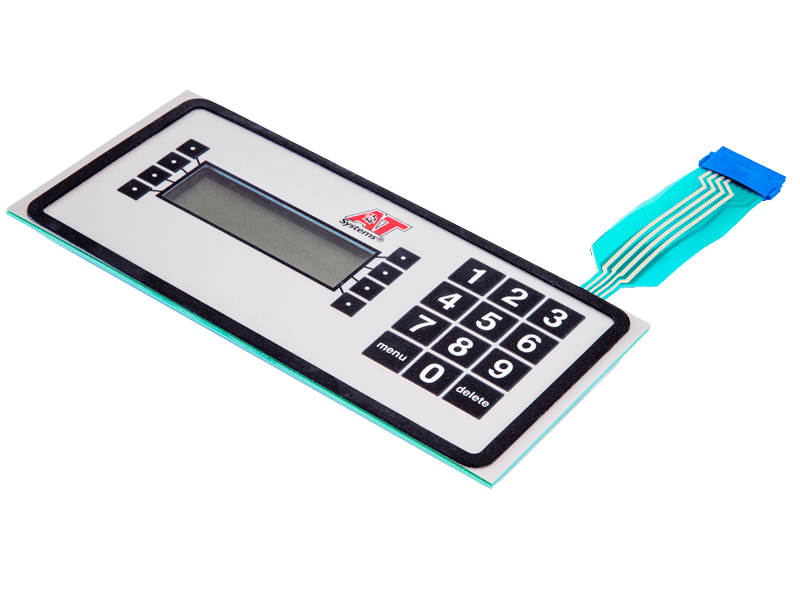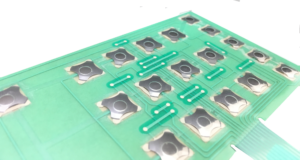Membrane Switches vs. Traditional Switches: What You Need to Know
Membrane Switches vs. Traditional Switches: What You Need to Know
Blog Article
Recognizing the Significance of Membrane Switches in Interface
Membrane buttons are important components in the layout of efficient user interfaces, assisting in not only capability but additionally enhancing visual charm and customer interaction. Their one-of-a-kind functions, such as resistance to adjustable designs and environmental variables, make them appropriate for a varied range of applications throughout multiple markets. As we explore the numerous advantages and future patterns connected with Membrane modern technology, it becomes clear that these buttons are greater than simply elements; they stand for a convergence of advancement and practicality. The ramifications of this modern technology on user experience are worth analyzing better.
What Are Membrane Switches?

The spacer layer, which has glue buildings, permits the separation of the circuit layer from the overlay, guaranteeing that the switch continues to be in a non-activated state till pressed. When pressure is put on the overlay, it presses the spacer layer, bridging the gap and finishing the circuit in the underlying layer. This layout not just minimizes the physical space needed for standard mechanical switches but additionally improves the resilience of the tool, as Membrane buttons are generally immune to dust, moisture, and various other environmental factors.
Generally discovered in applications varying from consumer electronic devices to medical devices, Membrane switches are important to modern innovation, offering a straightforward and effective user interface that aligns with modern design requirements.
Benefits of Membrane Switches
While numerous button technologies exist, Membrane Switches offer unique benefits that make them especially preferable in various applications. Among the primary benefits of Membrane buttons is their compact layout, which enables space-saving applications in tools where genuine estate is restricted. Their slim profile not just boosts aesthetic charm yet also assists in lightweight building.
An additional significant advantage is their resistance to environmental variables. Membrane switches are normally secured against moisture, dust, and impurities, making them ideal for use in demanding atmospheres, such as clinical gadgets and industrial equipment. This longevity extends the life expectancy of the button, lowering upkeep costs and enhancing reliability.
Additionally, Membrane buttons can be tailored to meet particular style demands, integrating special graphics and shades that boost customer communication. Their responsive responses alternatives can additionally be customized to give a satisfying user experience. Additionally, Membrane buttons are cost-efficient, specifically in high-volume applications, as they can be generated successfully.
Applications in Various Industries

In the consumer electronic devices industry, Membrane switches prevail in gadgets such as microwaves, washing machines, and remote controls. Their tactile feedback and visual options improve customer experience while supplying a streamlined, modern appearance. Furthermore, automotive makers use Membrane buttons in dashboard controls and infotainment systems, where room is limited, and user interaction is essential.
Additionally, the industrial market leverages Membrane buttons in control panels for machinery and equipment, enabling user-friendly operation in typically severe settings. Their resistance to chemicals and moisture makes sure longevity and reliability in these applications. Overall, the adaptability of Membrane Switches adds significantly to their extensive usage, making other them important in numerous technical domain names.
Style Considerations for Membrane Buttons

When developing Membrane buttons, numerous key considerations have to be taken into consideration to make sure optimal capability and customer experience. Firstly, the choice of materials is important; choosing durable, top notch substratums can boost the button's long life and resistance to ecological variables such as dampness and temperature fluctuations.
Second of all, the layout of the visuals overlay must prioritize clarity and ease of usage. Icons and text need to be legible, and the format must assist in user-friendly interaction (membrane switches). Additionally, responsive comments is vital; incorporating a tactile dome or other devices can boost the user experience by giving physical verification of activation
Another important variable is the switch's electrical efficiency. Designers have to ensure that the conductive traces are correctly made to decrease resistance and prevent signal disturbance. This involves evaluating the required actuation pressure and making certain compatibility with the digital parts they will interface with.

Future Patterns in Membrane Innovation
As technology continues to development, Membrane switches are positioned to evolve dramatically, driven by developments in products and making methods. One arising pattern is the incorporation of innovative products, such as flexible substratums and conductive inks, which improve toughness and reduce the general weight of Membrane buttons. These materials not only improve the tactile action but likewise permit the layout of buttons that can withstand harsher environmental conditions.
In addition, the integration of touch-sensitive technologies is transforming standard Membrane Switches right into more interactive individual interfaces. Capacitive touch sensors installed within Membrane button panels can give a more instinctive and receptive customer experience, aligning with the growing demand for sleek, contemporary styles in consumer electronics.
Furthermore, improvements in printing techniques, such as digital and 3D printing, enable rapid prototyping and personalization of Membrane switches. This flexibility allows producers to respond much more rapidly to market demands and consumer preferences.
Last but not least, sustainability is coming to be a substantial emphasis, with suppliers discovering green products and procedures. As these patterns unfold, the future of Membrane modern technology assures improved performance, find out here now aesthetic appeal, and ecological duty, solidifying their duty in advanced customer interfaces across various sectors.
Verdict
In final thought, Membrane Switches stand for a vital part in the design of customer interfaces, combining performance with visual versatility. As innovations in innovation continue, the see here advancement of Membrane buttons is anticipated to further fine-tune customer interfaces, driving development and boosting usability in a progressively intricate technological landscape.
Membrane buttons are integral components in the style of effective individual interfaces, promoting not only functionality however additionally enhancing aesthetic charm and customer communication.Membrane Switches serve as a crucial part in various user interfaces, facilitating a smooth communication in between users and electronic gadgets.While many button modern technologies exist, Membrane Switches offer distinct advantages that make them especially desirable in different applications.Additionally, Membrane buttons can be tailored to meet specific design demands, integrating special graphics and shades that improve individual communication.In final thought, Membrane Switches represent an important component in the design of individual interfaces, integrating performance with aesthetic flexibility.
Report this page